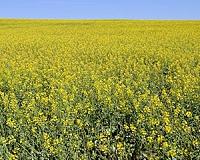 |
Los Angeles CA (SPX) Mar 08, 2011 Two types of raw materials are currently used for biorefining and biofuel production: carbohydrates and lipids. Biofuels like ethanol are derived from carbohydrate raw materials such as sugars and lignocellulose, while biodiesels are derived from another raw material, lipid-rich vegetable oil. In a study published online March 6 in the journal Nature Biotechnology, researchers at the UCLA Henry Samueli School of Engineering and Applied Science demonstrate for the first time the feasibility of using proteins - one of the most abundant biomolecules on earth - as a significant raw material for biorefining and biofuel production. "Proteins had been completely ignored as a potential biomaterial because they've been thought of mainly as food. But in fact, there are a lot of different proteins that cannot be used as food," said James C. Liao, the Chancellor's Professor of Chemical and Biomolecular Engineering at UCLA and senior author of the study. "These proteins were overlooked as a resource for fuel or for chemicals because people did not know how to utilize them or how to grow them. We've solved these problems." "This research is the first attempt to utilize protein as a carbon source for energy production and biorefining," said Kwang Myung Cho, a UCLA Engineering research scientist and an author of the study. "To utilize protein as a carbon source, complex cellular regulation in nitrogen metabolism had to be rewired. This study clearly showed how to engineer microbial cells to control their cellular nitrogen metabolism." In nutrient-rich conditions, proteins are the most abundant component in fast-growing microorganisms. The accumulation rate of proteins is faster than that of any other raw materials, including cellulose or lipids. In addition, protein does not have the recalcitrance problems of lignocellulose or the de-watering problem of algal lipids. Protein biomass can be much more easily digested to be used for microorganisms than cellulosic biomass, which is very difficult to break down. Further, cellulose and lipids don't contribute to the process of photosynthesis. But proteins are the major component of fast-growing photosynthetic microorganisms. The challenge in protein-based biorefining, the researchers say, lies in the difficulties of effectively converting protein hydrolysates to fuels and chemicals. "Microorganisms tend to use proteins to build their own proteins instead of converting them to other compounds," said Yi-xin Huo, a UCLA postdoctoral researcher and lead author of the study. "So to achieve the protein-based biorefining, we have to completely redirect the protein utilization system, which is one of the most highly regulated systems in the cell." Liao's team created an artificial metabolic system to dump reduced nitrogen out of cells and tricked the cells to degrade proteins without utilizing them for growth. Proteins contain both ammonia and carbon; Liao's team took away the ammonia and recycled it back for the growth of the algae they worked with. Algae with rich ammonia fertilizers grow quickly and were used only as a carrier to assimilate carbon dioxide and produce protein, which results in more CO2 fixation and growth. With this strategy, expensive photo-bioreactors can be eliminated. "Today, nitrogen fertilizers used in agriculture and biofuel production have become a major threat to many of the world's ecosystems, and the nitrogen-containing residuals in biofuel production can eventually turn into nitrous oxide, which is about 300 times worse than CO2 as a greenhouse gas," Liao said. "Our strategy effectively recycles nitrogen back to the biofuel production process, thus approaching nitrogen neutrality. "Growing algae to produce protein is like putting the interest back into the principal," he said. According to Liao's team, the culture area needed to produce 60 billion gallons of biofuels (30 percent of the United States' current transportation fuel) based on the new technology could be as little as 24,600 square kilometers - equivalent to 1.9 percent of the agricultural land in the U.S. "Developing large-scale systems is our next step," Huo said. "Harvesting of the protein biomass economically is a bottleneck of advancing our technology."
Share This Article With Planet Earth
Related Links University of California - Los Angeles Bio Fuel Technology and Application News
 New Study To Look At Economics, Groundwater Use Of Bioenergy Feedstocks
New Study To Look At Economics, Groundwater Use Of Bioenergy FeedstocksAmarillo TX (SPX) Mar 07, 2011 Biofuel feedstock production in the Texas High Plains could significantly change the crop mix, which could affect regional income and groundwater consumption, according to Texas AgriLife Research and Texas AgriLife Extension Service economists. Dr. Steve Amosson, AgriLife Extension economist in Amarillo, and Dr. Seong Park, AgriLife Research economist in Vernon, are joining other economist ... read more |
|
| The content herein, unless otherwise known to be public domain, are Copyright 1995-2010 - SpaceDaily. AFP and UPI Wire Stories are copyright Agence France-Presse and United Press International. ESA Portal Reports are copyright European Space Agency. All NASA sourced material is public domain. Additional copyrights may apply in whole or part to other bona fide parties. Advertising does not imply endorsement,agreement or approval of any opinions, statements or information provided by SpaceDaily on any Web page published or hosted by SpaceDaily. Privacy Statement |